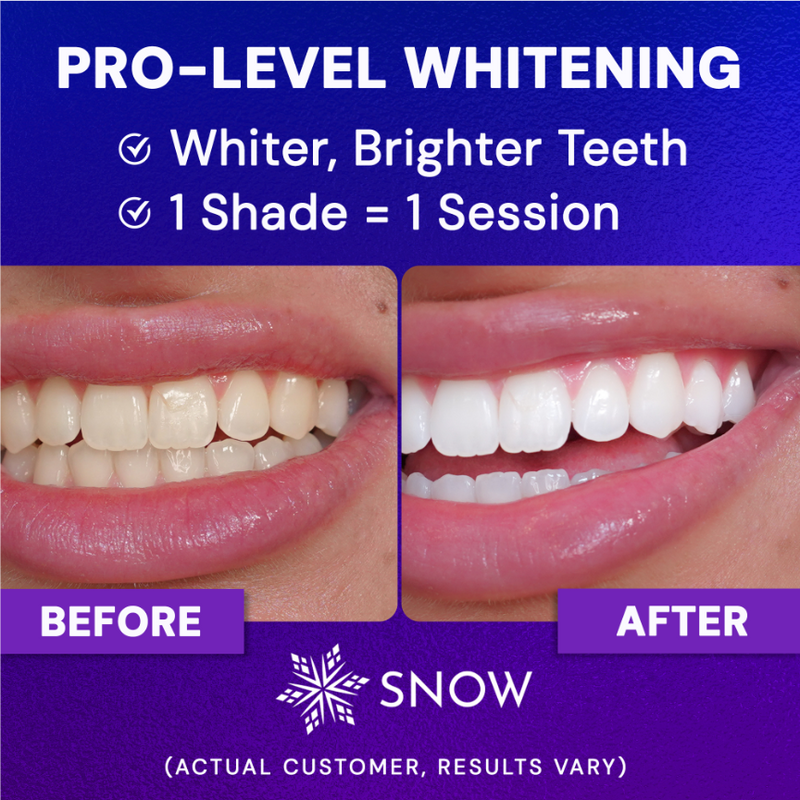According to statistics published by the National Health and Nutrition Examination Survey, close to 3 billion people suffer from cavities (also known as dental caries) in their teeth.
People of all ages are affected by cavities. Though the situation has certainly improved in the last few decades, awareness is still needed in order to improve overall oral hygiene and health.
Thankfully, dental hygiene has come a really long way and you can choose from various kinds of dental fillings based on your preference, budget and of course the affected area.
Depending on how many teeth you need to get treated, the overall cost can vary. The cost of dental fillings will be based on the type of filling and your insurance coverage.
Types of cavity fillings
You can choose between silver amalgam or composite resin fillings based on whether you plan to pay with or without insurance.
This article will cover cavity fillings costs and how your dental insurance plan can help you secure the best service and price.
Does dental insurance save money?
What do fillings cost if you have dental insurance and what are the costs without insurance? Here are things to know and consider when it comes to covering the cost of dental services.
Insurance premiums
Though your dental insurance coverage will require you to pay a monthly premium and most dental plans call for upfront costs or even co-payments, a good dental insurance plan can actually bring down your dental costs considerably.
In fact, patients with an average dental plan can bring down their out-of-pocket costs by the following amounts.
- 100% of the cost involved for an annual routine visit.
- 80% of costs for silver amalgam fillings, basic procedures, and/or a root canal treatment.
- 50% of costs for crowns, bridges, and other major dental procedures.
Insurance coverage plans
Today, the marketplace has a plethora of dental insurance plans and different price tiers.
There is dental insurance for practically every income level and budget that covers basic procedures such as dental or cavity fillings, an oral health checkup, dental filling costs for one or two surfaces, basic dental procedures, and deep cleanings.
Therefore, with some amount of research, you can find the right plan for you that will balance out your costs versus savings.
Government protective regulations
According to The American Dental Association’s research, the dental insurance company market has provided more options for Americans since 2015.
This coupled with increased transparency by the federal government has made it easier to navigate the system and find a good dental discount plan.
These changes have made getting good coverage a lot easier than it has ever been.
What are cavity fillings?
So, what cavity fillings, and do you really need them? Yes. In order to maintain your oral health and prevent dental decay.
Why do we require cavity fillings?
Dental caries are holes that begin to form on the surface of teeth. Eventually, they can lead to greater decay if not treated early.
They start really small and gradually get larger, especially if you do not have a good dental hygiene plan in place.
Causes of tooth decay
Tooth decay or cavities can be caused due to many factors such as not cleaning teeth well enough, frequent consumption of unhealthy snacks loaded with sugar, and even bacterial infection. Since a cavity starts off really small, it is very hard to detect in the beginning.
Symptoms
Symptoms include discoloration, hypersensitivity, dull aches, and mouth pain.
An unattended cavity can lead to severe toothache, infection, and eventually tooth loss. If severe enough, you may need a root canal or extraction
Remedies
Your dentist will need to clean the decayed tooth and treat it with a filling. The dentist will first drill and remove all decaying material before placing the cavity filling.
They will then fill the tooth with filling materials such as composite resin, porcelain fillings, cast gold fillings, or amalgam.
Cavity fillings and treatment
Cavity-filling is a pretty simple and straightforward procedure and can be handled in just one quick visit to the dentist.
During the visit your dentist will also look for any chipped teeth, or additional cavities, and have that taken care for you as a part of the dental work.
You may need to get a tooth pulled if it cannot be saved. A dentist may also perform a root canal to save your decayed tooth instead of dental fillings.
Cost factors to consider:
The number of teeth that need to be filled
The more teeth you need to get filled, the higher the cost. Most dental insurance plans only cover a certain number of fillings per year.
The type of teeth that need filling
Cavity fillings in the farther end of your mouth such as the molars may be more expensive.
These teeth are a lot harder to reach and may require a specialized filling procedure that uses special equipment. Tooth filling cost will depend on whether it is a molar or otherwise.
Size of the cavity
Most dental insurance plans base their coverage on the size of the cavity. A larger decayed tooth will require more work and composite resin and at times even surgical extraction which can significantly affect the price.
Underlying infections
In the event that your gums or other teeth have been affected due to the cavity in one tooth, you will probably need more than one dental appointment. You may also need additional treatment and medication
Your dentist and location
Depending on your dentist's experience, reputation, and also his location, the price of a cavity filling will vary. Dental offices in metropolitan cities tend to be a tad more expensive.
Generally speaking, dental work cost is based on the options you select. For instance, porcelain filling and composite fillings are more costly than tooth fillings that involve teeth that need silver amalgam.
If you are willing to go in for a metal filling you are likely to pay a lot less.
How much do cavity fillings cost when you have insurance?
In most cases, a composite filling is not considered as an elective or cosmetic procedure and is likely covered by your insurance company.
In the event that it is not entirely covered by your insurance company, a major part of the cost of getting a cavity filled is covered.
Most dental insurance plans cover 60 to 80 percent of tooth fillings cost. As mentioned previously, the total cost depends on the filling material you choose.
Different insurance coverages tend to have different policies and getting the actual cost of a filling can be hard. That said, you can speak with your insurance provider and dentist to get an approximate cost for a tooth filling.
Check if your insurance coverage is just for basic dental filling and dental cleaning or also covers the cost of more expensive fillings.
How much do cavity fillings cost without insurance?
So, if you don't have dental insurance, what will a dental filling cost? Will you have to pay for filling costs as well as tooth extraction if you need one?
The filling cost is directly tied to the kind of material used for the dental filling and also your oral health. Metal fillings are cheaper than silver amalgam fillings and gold fillings are more expensive.
Choose a silver filling and the price will go up. Opt for composite fillings and the price will go down. The price can also be influenced, as mentioned earlier, based on whether the cavity is anterior or posterior and the number of teeth affected.
Likewise, one or two teeth are less expensive than three or more surfaces with or without insurance.
Dental care has many factors that affect the cost involved. Listed below is a breakdown of the costs based on the materials used.
Resin-based composite - $150 to $450
Composite resin fillings are a popular choice thanks to their durability and affordability.
The average cost will be approximately $200 for a single surface but can range from $150 to $450 based on the aforementioned factors.
If you have good dental hygiene and schedule a visit to your dentist's office for regular checkups, composite fillings can last you five to ten years.
Amalgam fillings - $200 to $300
Silver fillings are extremely popular. These are the most sought dental fillings.
If you want to be a little fancier than composite fillings, and yet not break the bank, go for a dental filling of silver amalgam.
On average, such fillings can cost $250 per single surface.
Again, the total cost of a cavity filling can range from $200 to $300 in the United States. Amalgam fillings are affordable and can last up to 10 years with proper care. These are as good as gold fillings and porcelain fillings at half of the cost.
Gold fillings - $400 to $1,000
Cavity filling costs vary in range. If you go for gold fillings, theycan cost upwards of $400 to $1,000 per tooth.
These fillings can last anywhere from 15 to 30 years. Despite their durability, gold dental fillings have declined in popularity.
Ceramic or porcelain fillings - $400 to $4,000
The most expensive filling procedure involves porcelain or ceramic fillings. These fillings can cost an average of around $1,000 per tooth.
However, depending on the dentist you choose, and the dental savings plan you have you can pay as low as $400 to $500 per tooth.
Ceramic fillings take more time to make. They are made in a lab and then fitted in your mouth.
Once the dental procedure is complete, it will last you a good 15 years according to dental and craniofacial research.
Additional costs - $50 to $1,000
- Dental examinations to check oral health
- Panoramic X-rays
- Periapical X-rays
- Bitewing X-rays
- Nitrous Oxide
- Non-intravenous conscious sedation
- Anesthesia
- Root canal
- Tooth extraction
These extra costs will range anywhere between $50 and $1,000 based on your location and if you have insurance. Costs without insurance will always be higher, so if you can shop around for a plan that suits your budget.
Ways to cover costs of dental fillings
Chat with your dental office regarding a dental savings plans. Some offices offer an in-office payment plan if you do not wish to make a monthly commitment toward insurance.
You may also go through the American Dental Association and research for affordable yet reliable dental services such as dental fillings near you.
Research dental schools in your area. The cost of dental fillings can also be mitigated by scouting for local dentistry schools that offer great discounts on dental fillings. This is a great way to cover costs without insurance.
Summary
Always ask for a cost breakdown before you sign up for any dental care services.
Practice proper dental hygiene and make it to your annual dental appointments. These are the best ways of keeping your teeth clean and free from dental caries.
Dental checkups and good dental care help you save on dental expenses in the long term. It also helps to identify any dental issues early on and gives you an opportunity to take preventative measures.








































































